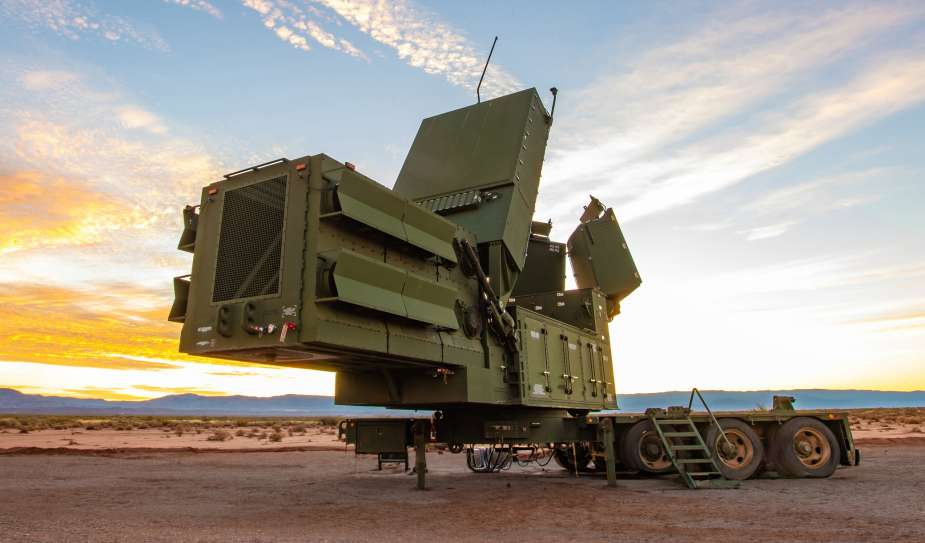Breaking news
RTX Raytheon LTAMDS Lower Tier Air and Missile Defense Sensor detects and engages complex target.
On March 21, Raytheon, a division of RTX Corporation, reported the continued success of its Lower Tier Air and Missile Defense Sensor (LTAMDS) in the U.S. Army's testing program, marking another milestone with a successful live-fire event. This event drew the attention of military leaders from seven different countries, who were present to observe the radar's operational efficiency and capabilities firsthand.
Follow Army Recognition on Google News at this link

The LTAMDS, known for its advanced 360-degree surveillance capacity, has now completed its fourth live-fire demonstration (Picture source: Raytheon)
The LTAMDS, known for its advanced 360-degree surveillance capacity, has now completed its fourth live-fire demonstration. Each test, growing in complexity, has showcased the radar's effective operation and its seamless integration with the Integrated Battle Command System (IBCS). In the most recent test, the system engaged a simulated cruise missile target that mimicked a real threat scenario by flying at high altitudes and speeds over extended distances. The LTAMDS successfully detected and tracked the target, communicated tracking information to the IBCS, and subsequently directed a PAC-3 Missile Segment Enhancement (MSE) missile to successfully intercept the target.
Tom Laliberty, the president of Land & Air Defense Systems at Raytheon, commented on the significance of the LTAMDS advancements, emphasizing its capability to stay ahead of current and future global threats. The radar's performance against sophisticated and realistic threats during these tests confirms its design integrity and highlights its potential to revolutionize air and missile defense missions.
Throughout 2023, the LTAMDS project reached several key milestones in its development, including successful live-fire exercises against air threats and ballistic missiles, as well as completing its scheduled contractor verification testing for the year. The system has consistently met its testing objectives and shown its initial technical capabilities within its designated operational sector.
Presently, six LTAMDS units are undergoing comprehensive integration and testing across various government and Raytheon facilities. The program is set to continue its stringent testing regimen throughout 2024, aiming to fully implement a 360-degree, full-sector operational capability within the year.
The LTAMDS represents the forefront of the U.S. Army's air and missile defense technology. This Active Electronically Scanned Array (AESA) radar, powered by Raytheon's Gallium Nitride technology, significantly enhances the Army's defensive capabilities against a wide array of threats, including manned and unmanned aircraft, cruise missiles, ballistic missiles, and hypersonic weapons.
Defense News March 2024


























